Home>Articles>How To Store Lithium Batteries When Not In Use


Articles
How To Store Lithium Batteries When Not In Use
Modified: January 8, 2024
Learn how to store lithium batteries properly when they are not in use with our informative articles. Discover the best practices to extend their lifespan and prevent damage.
(Many of the links in this article redirect to a specific reviewed product. Your purchase of these products through affiliate links helps to generate commission for Storables.com, at no extra cost. Learn more)
Introduction
Welcome to our comprehensive guide on how to store lithium batteries when not in use. Lithium batteries have become an essential power source for a wide range of electronic devices, including smartphones, laptops, and electric vehicles. However, improper storage of these batteries can lead to decreased performance, reduced lifespan, and even safety hazards.
Properly storing your lithium batteries when they are not in use is critical to maintaining their integrity and ensuring they are ready for optimal performance when you need them. In this article, we will explore the importance of correct battery storage and provide you with best practices to follow.
Understanding how lithium battery chemistry works is key to effectively storing them. Lithium-ion batteries offer a high energy density and long life cycle, making them a popular choice for portable electronics. However, they are also sensitive to certain conditions, such as extreme temperatures and overcharging, which can significantly impact their performance.
Factors such as the storage environment, preparation before storage, battery safety, and monitoring during storage all play vital roles in maintaining the health of lithium batteries. By implementing the best practices outlined in this guide, you can extend the lifespan of your batteries, prevent unnecessary damage, and ensure safety.
Choosing the right storage environment is crucial for maintaining the quality of your lithium batteries. Extreme temperatures can lead to irreversible damage and reduce the overall battery capacity. It is important to store your batteries in an area that is dry, cool, and away from direct sunlight. Additionally, protecting them from humidity and exposure to any corrosive materials is essential to prevent any potential damage.
Preparing your batteries before long-term storage is another important step to consider. This includes ensuring they are charged between 40% to 60% of their maximum capacity. Storing them in this range helps to prevent both overcharging and complete discharge, which can be detrimental to battery health. It is also recommended to disconnect any connected devices or circuits to minimize power drain while in storage.
To ensure battery safety, it is crucial to never store damaged or visibly leaking lithium batteries. Damaged batteries can be potentially hazardous and should be disposed of properly. Furthermore, it is important to prevent any physical damage to the batteries during storage, which can lead to internal short circuits or thermal runaway.
Regularly monitoring and maintaining your batteries during storage is essential to detect any potential issues early on. This can involve inspecting them periodically for any signs of damage, checking their charge levels, and ensuring the storage conditions remain optimal. If any abnormalities are detected, it is recommended to seek professional assistance or dispose of the battery if necessary.
Key Takeaways:
- Proper storage of lithium batteries is crucial for maintaining performance, longevity, and safety. Choosing the right environment, preparing for long-term storage, and regular monitoring are key to ensuring optimal battery health.
- Recognizing signs for battery disposal, such as physical damage or loss of charge capacity, is essential for safety and environmental conservation. Following local regulations and seeking professional guidance when in doubt is crucial for responsible disposal.
Read more: How To Store A Lithium Battery
Importance of Properly Storing Lithium Batteries
Properly storing lithium batteries when they are not in use is crucial for maintaining their performance, extending their lifespan, and ensuring safety. Here are a few reasons why it is important to pay attention to battery storage:
Preserving Battery Capacity: Lithium batteries gradually lose their capacity over time, even when not in use. However, improper storage conditions can speed up this process, leading to a significant reduction in battery life. By storing the batteries in the right environment, you can slow down the capacity degradation and ensure they retain optimal performance.
Preventing Self-Discharge: Lithium batteries have a natural tendency to self-discharge, meaning they lose charge even when not connected to any devices. This self-discharge rate can vary based on factors like temperature and battery chemistry. By properly storing the batteries, you can minimize self-discharge and prevent them from completely draining, which can negatively impact their health.
Protecting Against Extreme Temperatures: Exposure to extreme temperatures is one of the biggest enemies of lithium batteries. High temperatures can accelerate the rate of capacity loss and potentially cause permanent damage, while extremely low temperatures can reduce battery performance and increase internal resistance. Storing batteries in a cool and stable environment helps to mitigate these risks.
Ensuring Safe Storage: Lithium batteries, especially damaged or defective ones, can pose safety risks such as overheating, leakage, or even explosion. Proper storage practices reduce the chances of such incidents occurring, protecting not just the battery itself but also the surrounding environment and individuals who may come into contact with it.
Optimizing Battery Life: Lithium batteries have a limited number of charge cycles, and improper storage can accelerate the depletion of these cycles. By implementing the correct storage techniques, you can minimize unnecessary charge cycles and extend the overall lifespan of your batteries.
Minimizing Environmental Impact: Properly storing and maintaining lithium batteries helps to minimize the environmental impact of these energy storage devices. By extending their lifespan and reducing the need for premature replacement, you contribute to decreasing the number of batteries that end up in landfills.
By recognizing the importance of proper storage and implementing the best practices outlined in this guide, you can optimize the performance, prolong the lifespan, and ensure the safety of your lithium batteries when they are not in use. Taking these steps not only benefits you as a battery user but also contributes to a more sustainable and responsible use of energy storage technology.
Understanding Lithium Battery Chemistry
Lithium batteries are a type of rechargeable battery that utilize the chemical properties of lithium to store and release electrical energy. They are widely used in electronic devices due to their high energy density, longer lifespan, and lighter weight compared to other battery types.
Lithium battery chemistry is based on the movement of lithium ions between two electrodes, an anode (typically made of graphite) and a cathode (usually composed of a lithium metal oxide). This movement occurs through an electrolyte solution, which allows the ions to travel back and forth during charging and discharging cycles.
During charging, lithium ions flow from the cathode to the anode, where they are stored in the carbon structure of the graphite anode. This process takes place as a reduction reaction, with the anode material accepting the lithium ions. At the same time, the cathode material releases electrons, which flow through an external circuit, providing the electrical energy needed to charge the battery.
When the battery is discharged, the ionic movement reverses. The lithium ions move from the anode back to the cathode, while the electrons flow in the opposite direction, producing an electrical current that powers the device. This process is known as an oxidation reaction, as the anode material releases the stored lithium ions and the cathode material accepts these ions along with the released electrons.
Lithium battery chemistry is highly efficient and allows for multiple charging and discharging cycles, making them ideal for long-term use. However, certain factors can affect the performance and lifespan of lithium batteries.
Overcharging: Excessive charging of lithium batteries can lead to the accumulation of lithium metal, which can cause internal short circuits and lead to thermal runaway. This can result in the battery overheating, expanding, and potentially catching fire or exploding. Lithium batteries often come with built-in circuitry to prevent overcharging, but it is still important to be mindful of the charging process and not exceed recommended voltage limits.
Temperature: Extreme temperatures, both high and low, can negatively impact lithium batteries. High temperatures can cause accelerated capacity loss, while low temperatures can reduce battery performance. It is advisable to store and operate lithium batteries within the recommended temperature range specified by the manufacturer.
Physical Damage: Physical damage to lithium batteries, such as punctures, dents, or cracks, can compromise their integrity and potentially lead to safety hazards. Damaged batteries should not be used and should be properly disposed of according to local regulations.
Age and Usage: Lithium batteries have a limited lifespan, typically measured in charge cycles. Over time, their capacity may diminish, and they may not hold a charge as effectively. Continuous usage and frequent deep discharges can shorten the battery’s overall lifespan.
Understanding the underlying chemistry of lithium batteries is essential for properly handling, charging, and storing them. By following recommended guidelines and best practices, you can maximize the performance and longevity of your lithium batteries while ensuring their safe usage.
Factors Affecting Battery Storage
When it comes to storing lithium batteries, several factors can impact their overall performance, lifespan, and safety. It is important to be aware of these factors to ensure proper battery storage. Let’s take a look at the most critical ones:
Temperature: Temperature plays a significant role in the storage of lithium batteries. Extreme temperatures, whether hot or cold, can have adverse effects on their performance and longevity. High temperatures can accelerate the degradation of battery chemistry, leading to capacity loss and reduced overall lifespan. Conversely, extremely low temperatures can increase the internal resistance of the battery, resulting in decreased efficiency and performance. It is best to store lithium batteries in a cool, dry environment, preferably within a temperature range specified by the manufacturer.
Humidity: Excessive humidity can also have a negative impact on battery storage. Moisture can lead to corrosion, which can damage the internal components of the battery and compromise its performance. It is essential to keep the storage environment dry and free from any sources of potential moisture, such as water leaks or high humidity areas.
Exposure to Light: Lithium batteries should be stored away from direct sunlight or any other intense light sources. Continuous exposure to light can degrade the materials within the battery and impact its performance. It is recommended to store batteries in a dark or low-light environment to protect them from unnecessary light exposure.
Proper Discharge Level: The level of charge at which you store your lithium batteries is also crucial. Storing batteries with a high charge level can potentially result in self-discharge, leading to a decrease in overall capacity. On the other hand, storing batteries with a very low charge level can cause them to enter a deep discharge state, which can harm battery chemistry and reduce their lifespan. It is generally recommended to store lithium batteries at a charge level between 40% and 60%.
Physical Protection: Proper physical protection is essential to ensure the safety of lithium batteries during storage. Avoid exposing them to excessive force, impact, or vibrations, as these can damage the internal components and potentially lead to safety hazards. It is advisable to store batteries in a secure and stable location to prevent accidental damage.
Storage Duration: The duration of battery storage can also affect their overall performance. Even when stored under ideal conditions, lithium batteries will naturally lose some capacity over time. It is recommended to check and recharge stored batteries periodically to maintain their state of charge and prevent any potential issues that may arise from long-term storage.
By considering these factors and implementing the best practices for battery storage, you can ensure the optimal performance, longevity, and safety of your lithium batteries. Remember to always refer to the manufacturer’s guidelines and recommendations for specific storage instructions, as different battery models may have specific requirements.
Best Practices for Storing Lithium Batteries
Proper storage of lithium batteries is essential for maintaining their health, performance, and safety. By following these best practices, you can ensure that your batteries remain in optimal condition when not in use:
1. Choose the Right Storage Environment: Store your lithium batteries in a cool, dry place. Avoid exposing them to extreme temperatures or direct sunlight, as this can damage the battery chemistry. Ensure that the storage area is well-ventilated and away from any potential sources of moisture or corrosive materials.
2. Maintain the Ideal Charge Level: Before storing lithium batteries, ensure they are at a moderate charge level, ideally between 40% and 60%. This helps to prevent over-discharge or overcharging during storage. Avoid storing batteries at full charge or completely depleted as these conditions can diminish battery performance and lifespan.
3. Disconnect Any Connected Devices: When storing lithium batteries, disconnect them from any connected devices or circuits. This helps to prevent unnecessary power drain and ensures that the batteries remain in a stable state during storage. It is also important to remove batteries from devices that are not being used for an extended period.
4. Store Batteries Separately: If you are storing multiple lithium batteries, make sure to store them separately or properly insulate them. This prevents the risk of accidental short-circuiting, which can lead to battery damage or even safety hazards. Keeping batteries in their original packaging or using individual battery cases is recommended.
5. Avoid Physical Damage: Handle lithium batteries with care and avoid subjecting them to physical stress or damage. Dropping, crushing, or puncturing the battery can lead to internal short circuits or even thermal runaway. Damaged batteries should never be stored and should be disposed of according to local regulations.
6. Regularly Check for Damage: Periodically inspect stored lithium batteries for any signs of physical damage, such as bulging, leaking, or corrosion. If any issues are detected, safely dispose of the damaged batteries and replace them with new ones. Regular inspections help to identify potential problems early and prevent any safety risks.
7. Monitor the Storage Conditions: Keep an eye on the storage environment and ensure that it remains within the recommended temperature and humidity range. Fluctuations in temperature or exposure to moisture can negatively impact battery performance and longevity. Use a hygrometer to measure humidity levels and a thermometer to monitor the temperature periodically.
8. Recharge and Rotate Batteries: If you have stored lithium batteries for an extended period, it is recommended to recharge them periodically. This helps to maintain their charge level and prevent over-discharge. Additionally, if you have multiple batteries, consider rotating them, using the oldest ones first, to ensure that all batteries are being used and cycled regularly.
9. Dispose of Unused Batteries Properly: If you have lithium batteries that are no longer usable or have reached the end of their lifespan, it is essential to dispose of them properly. Lithium batteries should not be thrown in the regular trash as they can be hazardous to the environment. Check your local regulations for battery recycling programs or drop-off locations.
By adhering to these best practices, you can ensure the longevity, performance, and safety of your lithium batteries when they are not in use. Proper storage practices contribute to responsible battery use and help minimize environmental impacts while maximizing the value and functionality of your batteries.
Read more: How To Store Lithium Ion Battery
Choosing the Right Storage Environment
When it comes to storing lithium batteries, selecting the appropriate storage environment is crucial for maintaining their integrity and ensuring optimal performance. Here are some key considerations to keep in mind when choosing the right storage environment:
Temperature: Temperature is a critical factor in lithium battery storage. High temperatures can accelerate the degradation of battery chemistry, while extremely low temperatures can reduce battery performance. It is best to store lithium batteries in a cool environment, ideally between 15°C and 25°C (59°F and 77°F). Avoid storing batteries in areas subject to extreme heat or cold, such as near radiators or in freezing conditions.
Humidity: Excessive humidity can lead to moisture damage, corrosion, or even short circuits in lithium batteries. It is important to store batteries in a dry environment with low humidity levels to prevent any potential moisture-related issues. Avoid storage areas prone to high humidity, such as basements or bathrooms. If you live in a particularly humid climate, consider using desiccants or moisture-absorbing materials in the storage space.
Light Exposure: Lithium batteries should be stored away from direct sunlight or any other intense light sources. Continuous exposure to light, particularly ultraviolet (UV) rays, can degrade the battery materials and potentially impact performance. It is best to store batteries in a dark or dimly lit area, such as a drawer or cupboard, to protect them from unnecessary light exposure.
Away from Corrosive Materials: Corrosive substances can cause damage to lithium batteries, compromising their performance and safety. Store batteries away from any materials that could potentially leak or release corrosive chemicals. Keep them separate from household cleaning products, automotive fluids, or any other corrosive substances that may be present in your storage area.
Stable Environment: Ensure that the storage environment is stable and free from excessive vibrations or drastic changes in temperature. Vibrations and sudden temperature fluctuations can lead to internal damage in lithium batteries, affecting their performance and overall lifespan. Avoid storing batteries near appliances or areas with high foot traffic to minimize the risk of accidental physical damage.
Proper Ventilation: While lithium batteries do not require direct ventilation, it is important to store them in a well-ventilated area. Good airflow helps prevent the buildup of any potential off-gassing or fumes generated by the batteries. Avoid storing batteries in airtight containers or sealed spaces to ensure proper ventilation and prevent the accumulation of any potentially harmful gases.
Child and Pet Safety: If you have young children or pets, it is crucial to store lithium batteries in a secured location. Keep them out of reach to prevent accidental ingestion or physical damage. Consider using childproof locks or dedicated battery storage containers to ensure the safety of both the batteries and those in close proximity.
By selecting the right storage environment for your lithium batteries, you can help maintain their performance, extend their lifespan, and ensure their overall safety. Following these guidelines will ensure that your batteries remain in optimal condition and are ready for use whenever you need them.
Store lithium batteries at room temperature in a dry place. Avoid extreme temperatures and keep them away from direct sunlight. It’s best to store them at around 50% charge to prolong their lifespan.
Preparing Batteries for Long-Term Storage
When storing lithium batteries for an extended period, it is crucial to properly prepare them to ensure their longevity and performance. Here are some essential steps to take when preparing your batteries for long-term storage:
1. Charge Batteries to the Recommended Level: Before storing lithium batteries, ensure that they are adequately charged to a moderate level, typically between 40% and 60% of their maximum capacity. This charge range helps to prevent both overcharging and complete discharge during storage, which can be detrimental to battery health. Avoid storing batteries at fully charged or depleted levels.
2. Disconnect Devices or Circuits: If the batteries are connected to devices or circuits, make sure to disconnect them before storage. This prevents any power drain from the connected devices and ensures that the batteries remain in a stable state during the storage period. It is also advisable to remove batteries from devices that will not be used for an extended period.
3. Inspect Batteries for Damage: Before storing, carefully inspect the batteries for any signs of physical damage, such as bulging, leakage, or corrosion. If you notice any abnormalities or damage, safely dispose of the damaged batteries and replace them with new ones. Storing damaged batteries can pose safety hazards and potentially damage other batteries or items in the storage area.
4. Use Proper Storage Containers: It is recommended to store lithium batteries in their original packaging or dedicated battery cases. These containers provide additional protection against physical damage and help to prevent accidental short-circuits when storing multiple batteries. If the original packaging is no longer available, consider using individual battery cases or small plastic bags to keep them separate and protected.
5. Avoid Extreme Temperatures: When choosing a storage location, ensure that it is within the recommended temperature range for lithium batteries. Extreme temperatures can significantly affect battery performance and reduce their lifespan. Avoid storing batteries in areas subject to excessive heat or cold, such as near heaters, windows, or outside storage sheds. A cool and stable environment is ideal for their long-term storage.
6. Keep Batteries in a Dry Environment: Moisture is another factor that can negatively impact lithium battery storage. Choose a storage location that is dry and away from any potential sources of moisture, such as basements or areas prone to leaks. It is also advisable to use desiccants or moisture-absorbing materials in the storage area to further minimize the risk of moisture-related damage.
7. Label and Date the Batteries: To keep track of the storage duration and ensure proper rotation, consider labeling the batteries with the date of storage. This is particularly useful when storing multiple batteries or when you have a battery inventory with varying storage periods. It helps to monitor and manage their storage time and simplifies the process of checking and recharging batteries periodically.
8. Store Batteries in a Secure Location: Choose a storage area that is secure and out of reach of children and pets. This helps to prevent accidental handling or ingestion of batteries, which can be dangerous. Consider using dedicated battery storage containers with childproof locks or high shelf placements to ensure their safety.
9. Monitor the Storage Conditions: Periodically check the storage area to ensure the conditions remain stable. Verify that the temperature and humidity levels are within the recommended range for battery storage. Fluctuations in these conditions can affect battery performance. Regular monitoring allows for early detection of any issues and ensures the batteries are stored in optimal conditions.
By following these steps and properly preparing your lithium batteries for long-term storage, you can help maintain their performance and extend their lifespan. It is crucial to store batteries in a suitable environment and take necessary precautions to ensure their safety. This preparation ensures that the batteries are ready for use when you need them, and minimizes the risk of damage or performance degradation during storage.
Tips for Ensuring Battery Safety
Ensuring battery safety is of utmost importance when handling and storing lithium batteries. Here are some crucial tips to follow to prevent accidents and ensure the safe usage of batteries:
1. Use the Correct Charger: Always use the charger specifically designed for the type and model of battery you are using. Using an incorrect or incompatible charger can result in overcharging, overheating, or even explosion. Avoid using counterfeit or unverified chargers, as they may not adhere to safety standards and could pose a risk to both the battery and the user.
2. Avoid Overcharging: Overcharging lithium batteries can be dangerous and lead to thermal runaway, a potentially hazardous condition where the battery overheats and can cause a fire or explosion. Always follow the manufacturer’s recommended charge time and never leave batteries unattended while charging. Use chargers with built-in overcharge protection to prevent overcharging.
3. Prevent Physical Damage: Lithium batteries should be protected from physical damage, as it can lead to internal short circuits or thermal runaway. Avoid dropping, crushing, or puncturing batteries. Store them in a secure location where they won’t be subject to accidental impact or damage. Damaged batteries should never be used or stored and should be disposed of properly.
4. Store Batteries Safely: When storing lithium batteries, it is crucial to keep them in a cool, dry, and well-ventilated area. Avoid exposing them to extreme temperatures, high humidity, or direct sunlight. Store batteries away from flammable materials and keep them in a secure location out of the reach of children or pets. Insulate each battery to prevent accidental short circuits when storing multiple batteries.
5. Do Not Mix Batteries: Avoid mixing different types, brands, or capacities of batteries in the same device or storage container. Mixing batteries can lead to uneven charging or discharging, which can result in irreversible damage to the batteries or potential safety hazards. Always use batteries of the same type and capacity together.
6. Dispose of Batteries Properly: When a lithium battery reaches the end of its lifespan or is damaged beyond repair, it is crucial to dispose of it properly. Do not throw batteries in regular trash bins, as they can harm the environment and pose a risk to waste management personnel. Check local regulations for battery recycling programs or designated drop-off locations for safe disposal.
7. Educate Yourself: Stay informed about the specific safety guidelines provided by the manufacturer for the lithium batteries you use. Familiarize yourself with the proper handling, charging, and storage instructions. It is essential to understand the potential risks associated with lithium batteries and take necessary precautions to ensure safe usage.
8. Be Cautious with Damaged Batteries: If you notice any signs of damage, such as swelling, leakage, or unusual behavior from a lithium battery, discontinue use immediately. Safely remove the battery from the device and store it in a fireproof container if possible. Dispose of the damaged battery following the appropriate guidelines. Do not attempt to use or fix a damaged lithium battery.
9. Stay Prepared for Emergencies: Have a fire extinguisher nearby when working with or storing lithium batteries, especially in larger quantities. Familiarize yourself with the proper use of fire extinguishers and know how to handle a battery-related emergency. Promptly contact emergency services if an incident occurs.
By following these tips for battery safety, you can minimize the risks associated with lithium batteries and ensure their safe usage. Battery safety should always be a priority to protect yourself, others, and the environment from potential hazards.
Monitoring and Maintenance During Storage
Monitoring and maintaining lithium batteries during storage are crucial to ensure their continued performance, prevent issues, and maximize their lifespan. Here are some important steps to take when monitoring and maintaining batteries during storage:
1. Regular Inspections: Periodically inspect stored lithium batteries for any signs of physical damage, leakage, or bulging. If you notice any abnormalities, such as swelling or corrosion, safely dispose of the damaged battery and replace it with a new one. Regular inspections help detect potential issues early and prevent any safety risks.
2. Check Charge Levels: Monitor the charge level of stored batteries to ensure they remain within the desired range. While lithium batteries have a slow self-discharge rate, it is still advisable to check their charge periodically and recharge as needed. This helps to maintain the state of charge and prevents over-discharge that can lead to capacity loss.
3. Recharge when Necessary: If stored batteries have significantly discharged, recharge them before storing them again. Bringing the battery charge level back up to the recommended range helps prevent over-discharge and ensures they are ready for use when needed. However, avoid overcharging the batteries as it can lead to safety hazards and reduced battery lifespan.
4. Temperature and Humidity Monitoring: Continuously monitor the storage environment for temperature and humidity levels. Fluctuations in temperature or excessive humidity can impact battery performance and longevity. Use thermometers and hygrometers to ensure that the conditions remain within the recommended range for battery storage.
5. Maintain Proper Ventilation: Ensure that the storage area has adequate ventilation, especially if storing a large number of batteries. Good ventilation helps prevent the build-up of any potential off-gassing or fumes and keeps the air circulating around the batteries. Avoid storing batteries in airtight containers or areas with poor airflow.
6. Rotate Batteries: If you have multiple batteries in storage, consider rotating their usage periodically. Use the oldest batteries first and replace them with newer ones. This practice helps to ensure that all batteries are being used and cycled regularly, preventing any single battery from being stored for an excessively long period.
7. Keep Records and Dates: Maintain records of when batteries were stored and their condition. Label batteries with the date they were put into storage. This helps to track the storage duration and facilitates a systematic approach to monitoring and rotating batteries. It also assists in identifying batteries that may have been in storage for too long and need attention.
8. Reassess Storage Conditions: Regularly reassess the storage conditions to ensure they remain suitable for battery storage. Check for any changes in temperature, humidity, or physical factors that may affect battery performance. Adjust the storage environment as necessary to maintain optimal conditions for the batteries.
9. Have a Procedure for Emergencies: Establish an emergency plan and procedure in case of battery-related incidents during storage. Make sure you have a fire extinguisher readily available and know how to use it. Train employees or family members on the proper response to a battery-related emergency and be prepared to contact emergency services if needed.
By monitoring and maintaining lithium batteries during storage, you can address any issues promptly and ensure their continued performance. Regular inspections, charge level checks, and environmental monitoring contribute to the longevity and safety of the batteries, making them ready for use whenever needed.
When to Dispose of Unused Lithium Batteries
Knowing when to dispose of unused lithium batteries is important to ensure safety and prevent environmental harm. While lithium batteries have a longer lifespan and can go through numerous charge cycles, there are instances when disposal is necessary. Here are some guidelines to help you determine when it’s time to dispose of unused lithium batteries:
1. Age and Usage: Lithium batteries have a limited lifespan, typically measured in years or charge cycles. Over time and with regular use, their capacity gradually diminishes. If you notice a significant decrease in the battery’s performance and it no longer holds a charge as effectively as before, it may be a sign that the battery has reached the end of its usable life and should be disposed of.
2. Physical Damage: If a lithium battery is physically damaged, such as being punctured, dented, or showing signs of swelling, it should not be used or stored. Damaged batteries can pose safety hazards due to the potential for leakage, discharge, or even thermal runaway. It is important to dispose of such batteries properly according to local regulations.
3. Leaking or Corrosion: If you observe leakage, corrosion, or unusual odors coming from a lithium battery, it is an indication of internal chemical reactions or electrolyte leakage. Leaking batteries should be handled with caution and disposed of immediately. Contact with leaked electrolyte can cause skin irritation or chemical burns.
4. Incompatibility or Obsolescence: If the lithium battery is no longer compatible with the device it was intended for or the device itself has become obsolete, it may be time to consider disposing of the battery. Storing unused batteries indefinitely without any purpose can lead to decreased performance and potential hazards.
5. No Longer Holding Charge: If a lithium battery consistently fails to hold a charge or rapidly drains even when it is not in use, it may be reaching the end of its lifespan. This is particularly true if the battery cannot be revived through charging, cycling, or other troubleshooting methods. In such cases, it is advisable to dispose of the battery safely.
6. Safety Recall or Manufacturer’s Recommendation: If a lithium battery is subject to a safety recall by the manufacturer or the manufacturer recommends disposal due to safety concerns, it is crucial to follow their instructions. Safety recalls are issued when there is a known defect or potential hazard associated with the battery.
7. Local Regulations: It is important to comply with local regulations regarding the disposal of lithium batteries. Many areas have specific requirements or designated collection points for battery recycling. Improper disposal of lithium batteries can be harmful to the environment and pose risks to waste management personnel.
8. Consult Professionals: If you are unsure about the proper disposal of lithium batteries or have any concerns, it is advisable to consult with local recycling centers or environmental agencies. They can provide guidance on safe disposal practices and point you in the right direction for recycling facilities or drop-off points.
Remember, proper disposal of unused lithium batteries is critical for safety, environmental conservation, and adherence to local regulations. By recognizing the signs mentioned above and taking appropriate action, you can ensure responsible disposal of unused lithium batteries. Together, we can minimize environmental impact and contribute to a sustainable future.
Conclusion
Properly storing lithium batteries when they are not in use is essential for maintaining their performance, longevity, and safety. By following the best practices outlined in this guide, you can ensure that your batteries remain in optimal condition and ready for use when needed.
Understanding the factors that affect battery storage, such as temperature, humidity, and physical damage, allows you to select the right storage environment. Choosing a cool, dry, and well-ventilated area, away from direct sunlight and corrosive materials, helps to preserve battery capacity and prevent degradation.
Preparing batteries for long-term storage involves charging them to the recommended level, disconnecting devices or circuits, and inspecting for any physical damage. Storing batteries in their original packaging or dedicated cases and maintaining the ideal charge level between 40% and 60% are important steps to ensure their longevity.
Monitoring and maintenance during storage play a significant role in identifying potential issues early on. Regular inspections, monitoring charge levels, maintaining proper ventilation, and keeping records help to ensure that stored batteries remain in optimal condition.
Knowing when to dispose of unused lithium batteries is crucial for safety and environmental considerations. Age, usage, physical damage, and loss of charge capacity are indicators that it may be time to dispose of a battery. Always comply with local regulations and consult professional disposal services if needed.
By following these guidelines and implementing these best practices, you can ensure the safety, optimal performance, and extended lifespan of your lithium batteries. Responsible battery storage and disposal contribute not only to your own safety but also to the overall well-being of the environment. Let’s prioritize proper battery care and contribute to a sustainable future.
Frequently Asked Questions about How To Store Lithium Batteries When Not In Use
Was this page helpful?
At Storables.com, we guarantee accurate and reliable information. Our content, validated by Expert Board Contributors, is crafted following stringent Editorial Policies. We're committed to providing you with well-researched, expert-backed insights for all your informational needs.



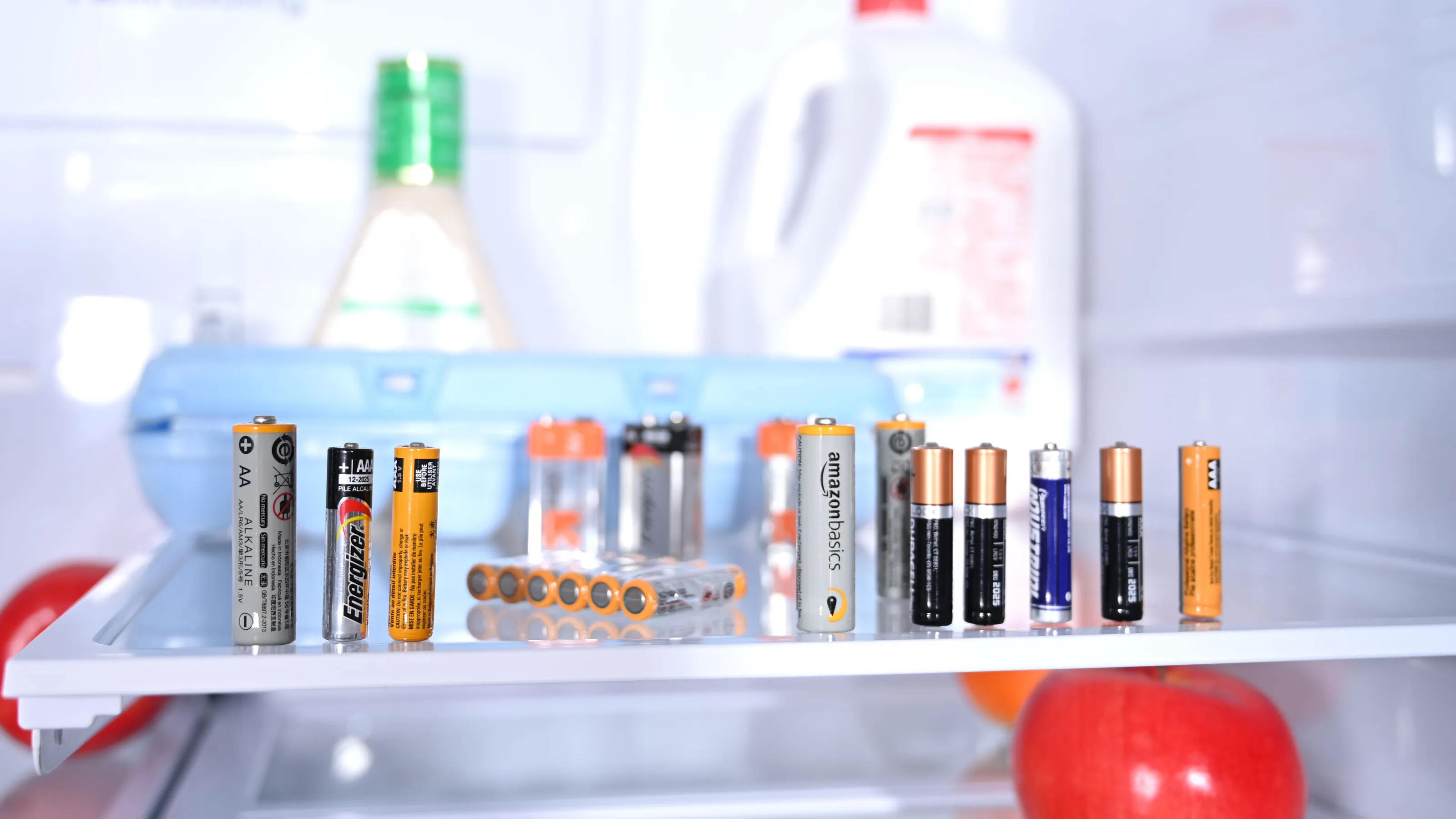
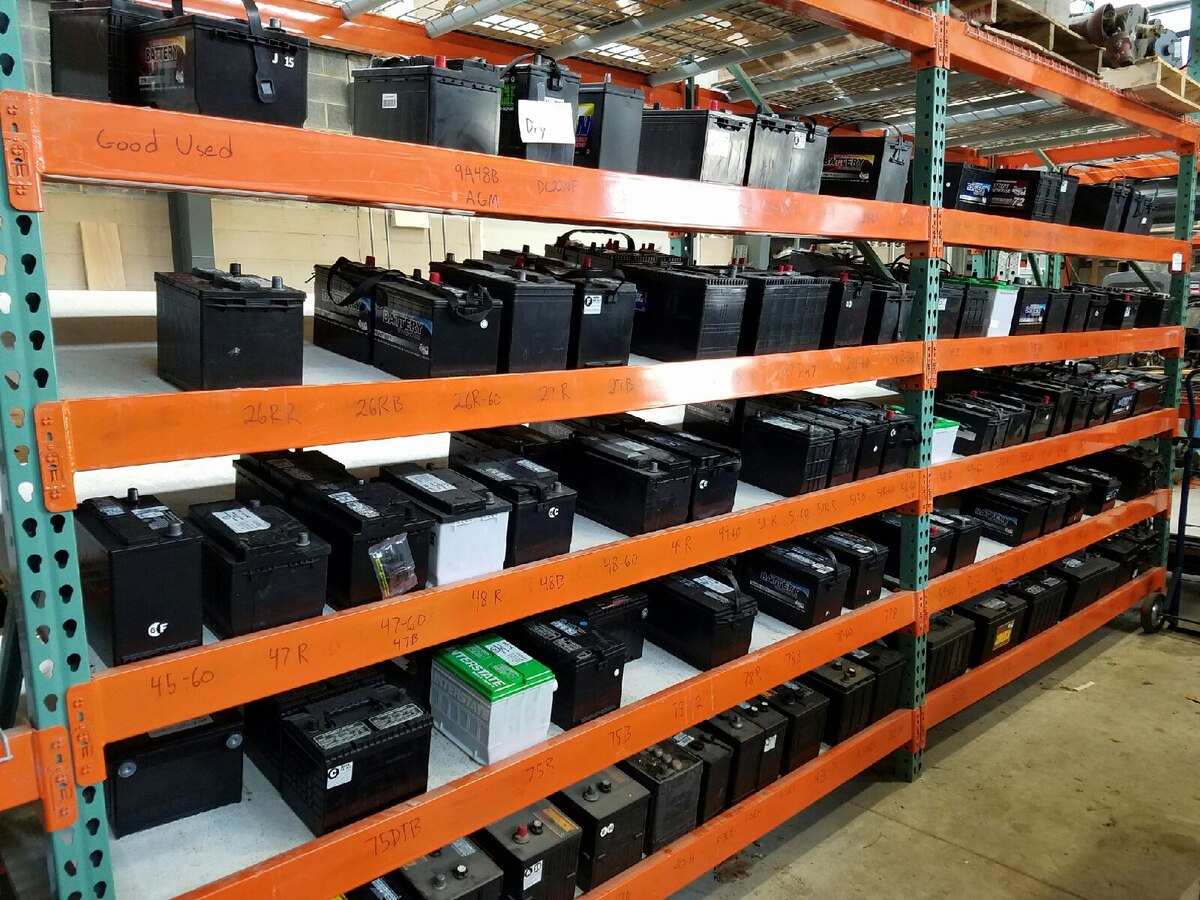


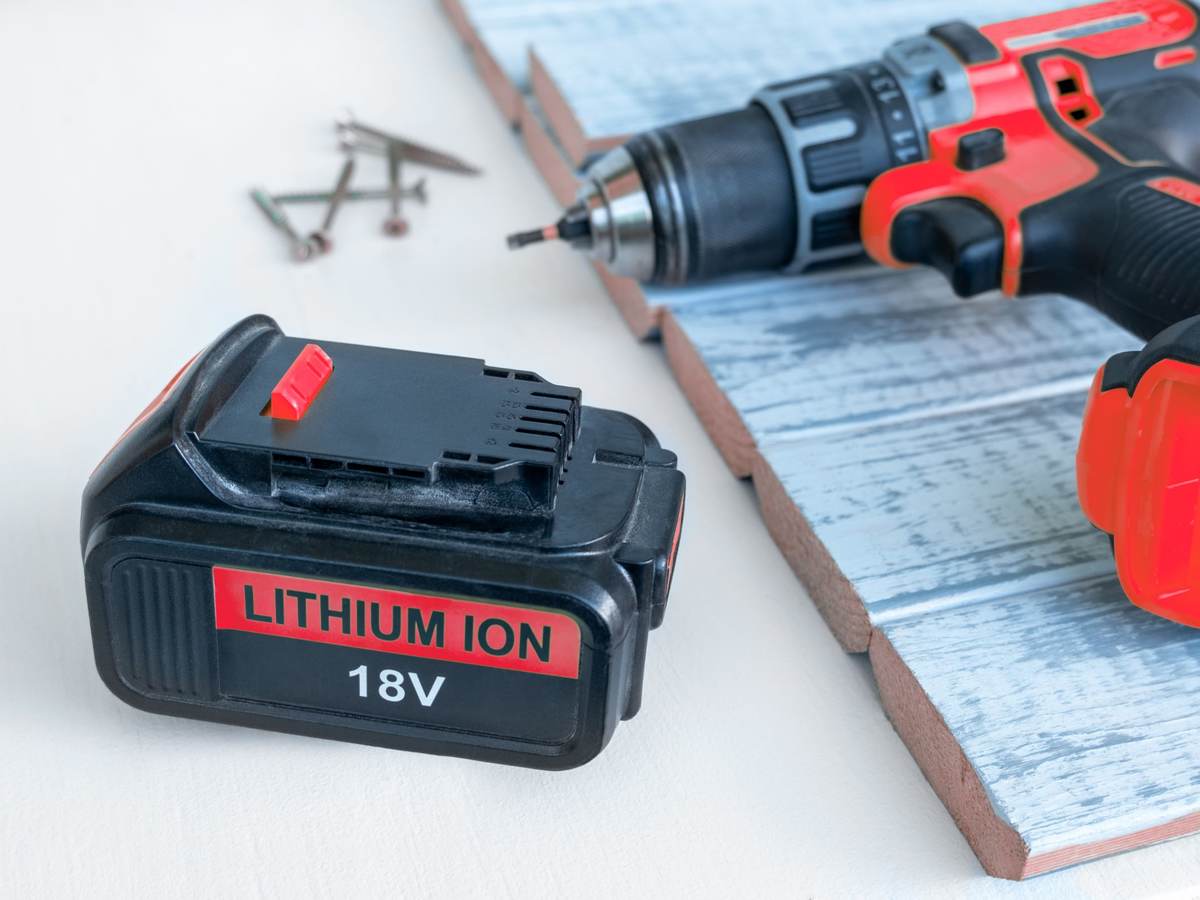
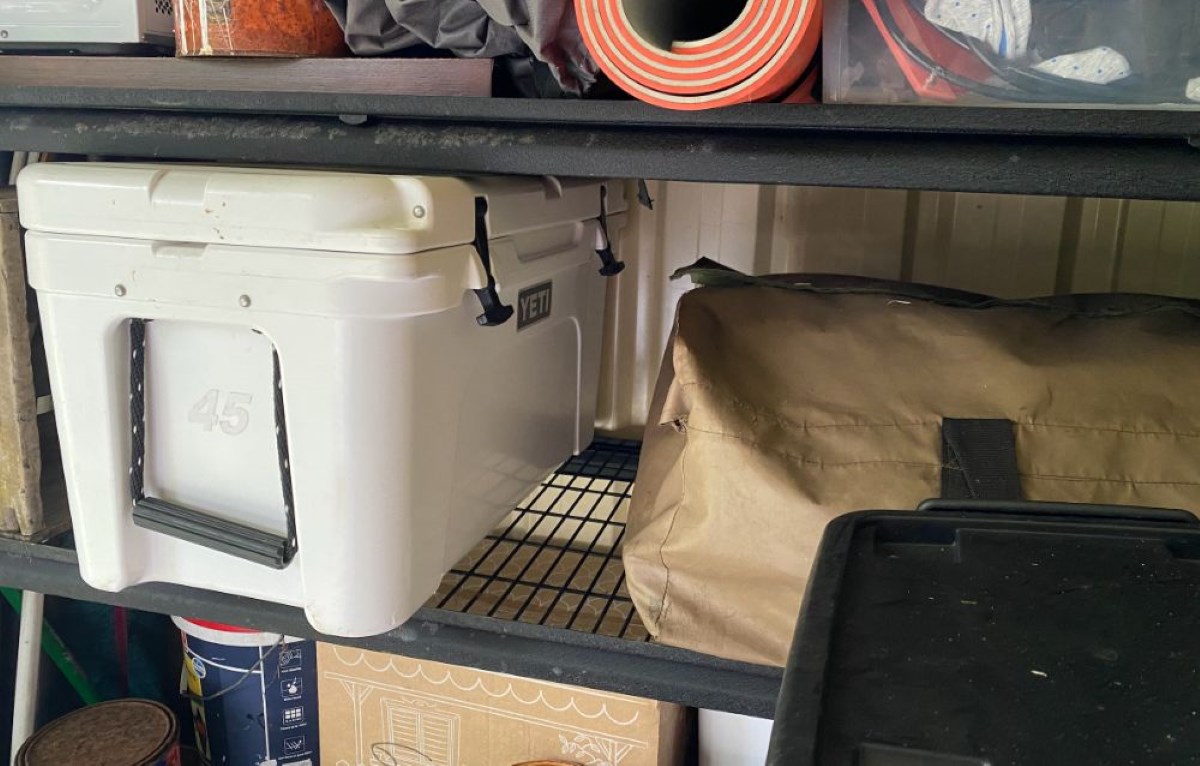

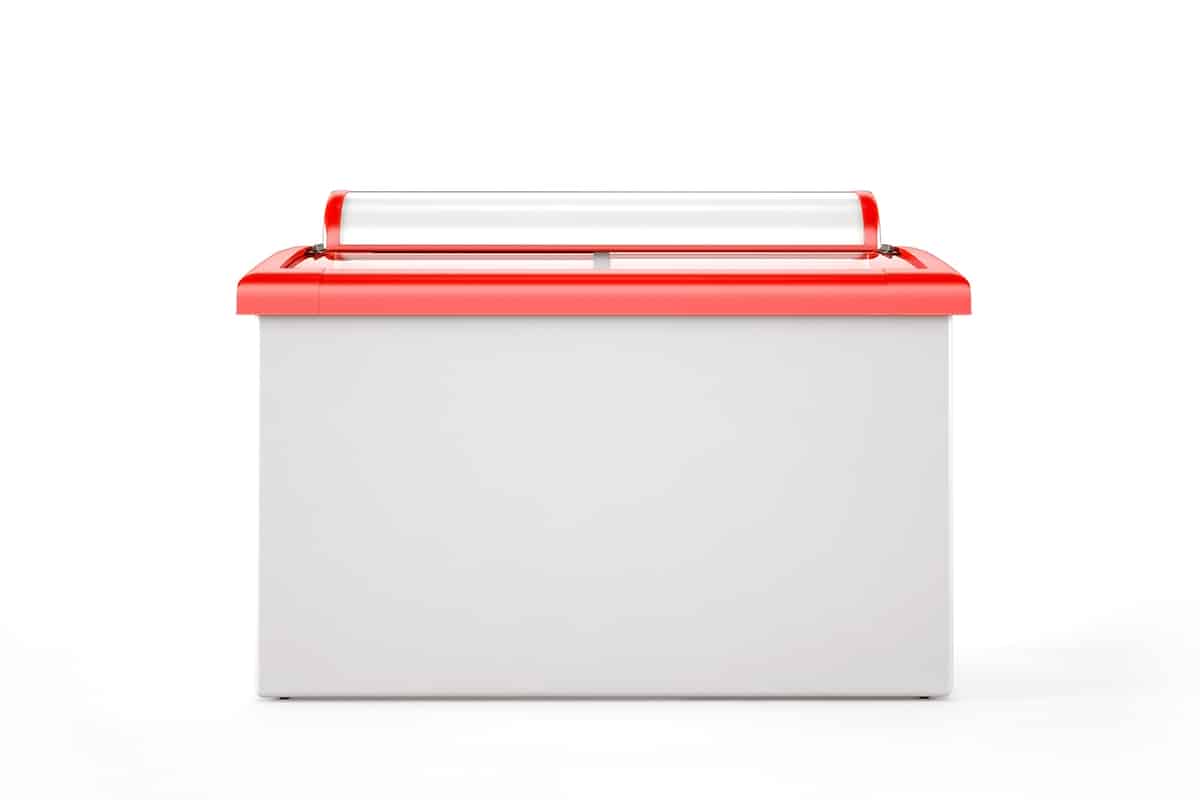

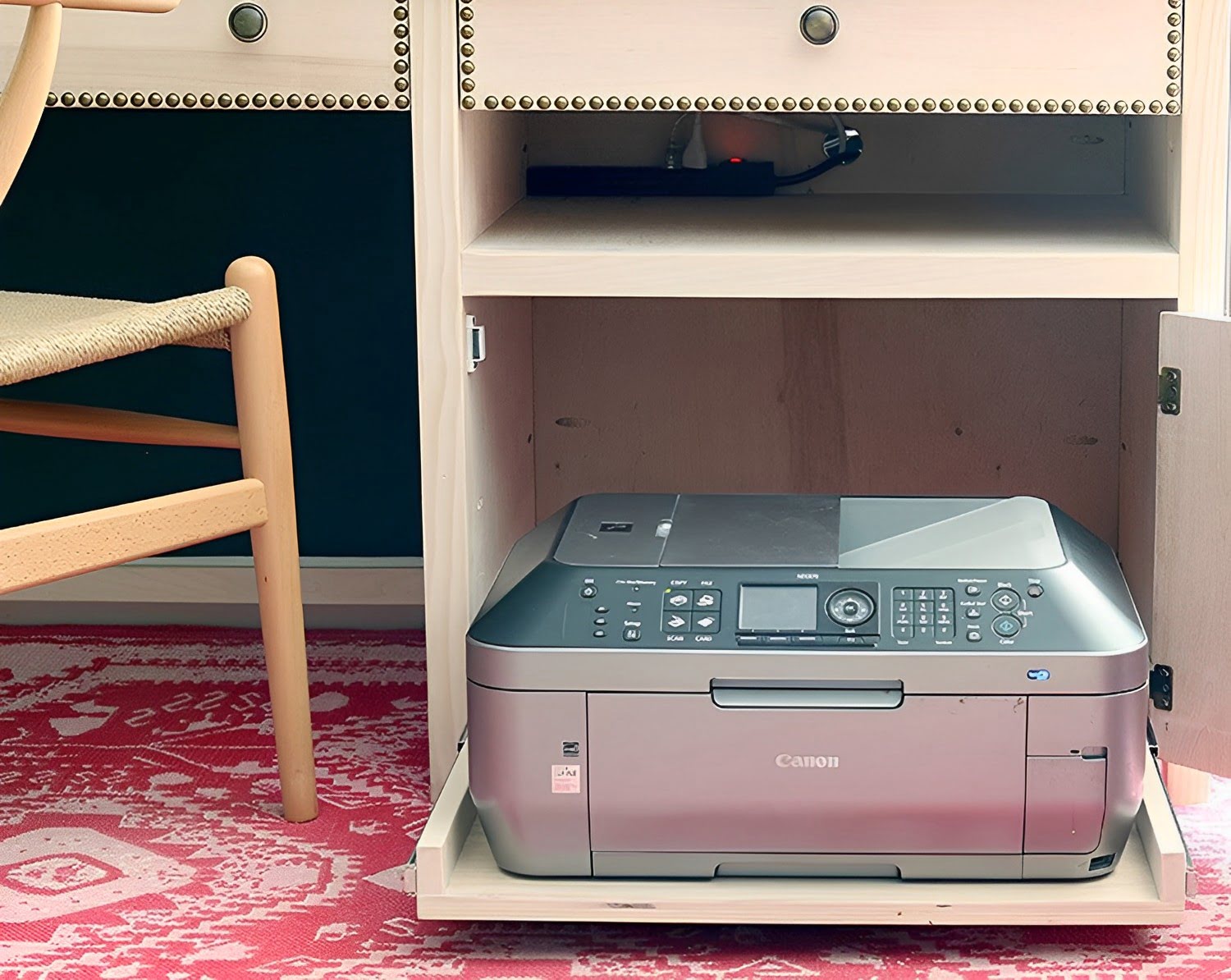

0 thoughts on “How To Store Lithium Batteries When Not In Use”